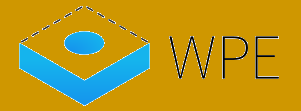In my previous post on WebKit, I explained how we can debug the WebProcess using GDB. In this post, I am going to talk about another useful debugging tool that can be used to debug graphics: APItrace.
Category: Graphics for WebKit
Posts related to graphics for browsers from a short period of time when I was working on WebKit.
An easy way to debug WebKit’s WebProcess with GDB
WebKit is an engine that uses multiple processes and multiple threads at runtime. There are some very useful generic instructions on how to debug one of its processes on Linux (with focus on the GTK port) in this wiki page. They work pretty well when WebKit is built using the Flatpak SDK and the scripts and gdbserver is installed in the system, but I faced some problems when I wanted to built WebKit with CMake having custom build and installation directories. So in this post, I’m going to describe the easiest way I’ve found so far to debug it when SDK is not being used and a gdbserver is not present in the system. I’ve found this simple solution after having tried a combination of tricks from the WebKit wiki instructions, GDB documentation and a discussion with my colleages at Igalia.
Continue reading An easy way to debug WebKit’s WebProcess with GDB
Sharing texture data between ANGLE and the native system driver using DMA buffers and EGL on Linux (proof of concept)
This post is about an experiment I’ve performed to investigate if it’s possible to fill a texture from an ANGLE EGL/GLESv2 context (ANGLE is an EGL/GLESv2 implementation on top of other graphics APIs), and use it from a native (for example mesa3D) EGL/OpenGL context on Linux.
Using EGL and the dma_buf kernel framework to associate two textures with the contents of the same buffer without copy taking place
It’s been a few weeks I’ve been experimenting with EGL/GLESv2 as part of my work for WebKit (Browsers) team of Igalia. One thing I wanted to familiarize with was using shared DMA buffers to avoid copying textures in graphics programs.
I’ve been experimenting with the dma_buf API, which is a generic Linux kernel framework for sharing buffers for hardware access across multiple device drivers and subsystems, using EGL and GLESv2.
Setting up to debug ANGLE with GDB (on Linux)
ANGLE is an EGL/GLES2 implementation on top of other graphics APIs. It is mainly used in systems that lack a native GLES2/GLES3 driver and in some browsers for example Chromium. As recently, I’ve used it for some browsers related work in Igalia‘s WebKit team (more on that coming soon) and had to set it up for debugging with GDB, I’d like to share the few extra settings and the configuration I’ve used to be able to use GDB and step inside the ANGLE API calls to examine the underlying driver API calls, when possible, while I was experimenting with ANGLE-based test programs.
Continue reading Setting up to debug ANGLE with GDB (on Linux)
Build WebKit/WPE on Linux/X11
There’s a lot of documentation online about building Webkit/WPE on Linux. But as most instructions are targetting embedded platforms developers, the focus is on building Webkit with Wayland using the flatpak-sdk to automate and speed up the building process. As the steps I’ve followed to build it on my X11 system and run the Webkit/WPE MiniBrowser on a nested Weston were a bit different from the recommended ones I thought that a blog post about them might be useful to people trying to build WPE/Webkit in platforms lacking Wayland, flatpak, systemd, and modern Desktop Environments like the latest KDE and GNOME.
Be careful though: this is not the recommended way to build WebKit/WPE, only the alternative steps I’ve followed in my personal computer until I have access to a building machine! If you are not sure about what you want to do with WebKit/WPE please take a look at the recommended wiki instructions before you follow mine!
